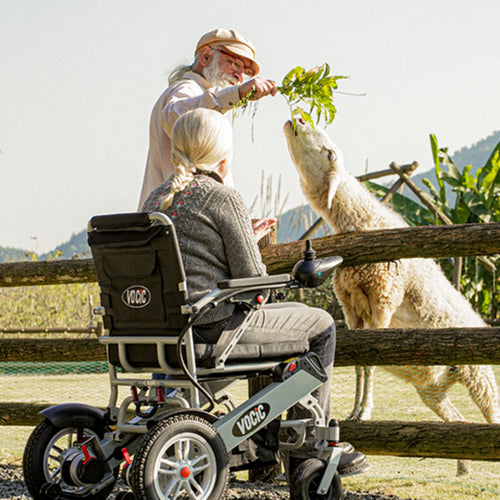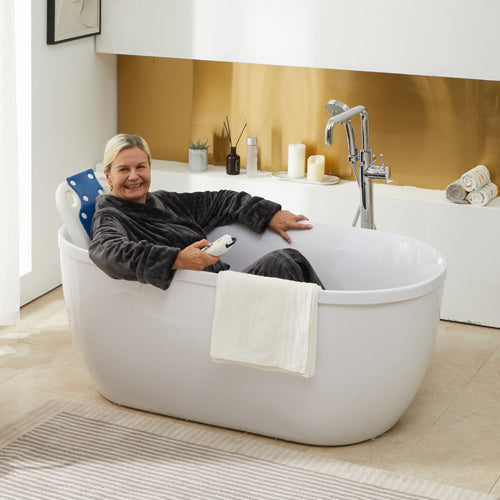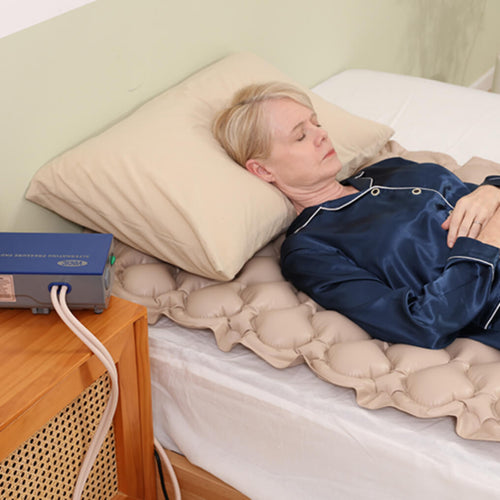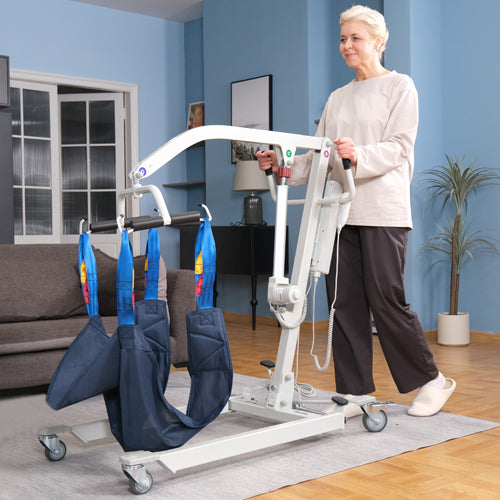According to the Mayo Clinic, people who have Ehlers-Danlos syndrome typically exhibit excessively flexible joints and delicate, elastic skin. This can pose a challenge when dealing with wounds that necessitate stitches, as the skin often lacks the strength to secure them effectively. Bruising or dislocation of the body is a daily experience for them. While pain relievers may be helpful, protecting yourself from injury is even more crucial. Lifestyle mobility aids might be able to assist you in this regard.
What Are the Lifestyle Mobility Aids?
Lifestyle mobility aids have been used by those with mobility challenges or special needs. Designed to enhance the quality of life, they bring greater independence and safety to users. These assistive devices can include various equipment such as mobility aid walkers, mobility scooters, bath aids, power wheelchairs, and other personal mobility aids.
The Benefits of Lifestyle Mobility Aids for EDS
Lifestyle mobility aids can provide more personal space, which reduces friction with the external environment. Therefore, the benefits of EDS using lifestyle mobility aids include:
- Support joint stability.
- Alleviate joint and muscle pain.
- Improve balance to reduce the risk of falls.
- Relieve fatigue.
- Promote social engagement.
- Minimize the risks associated with surgery and wound healing.
6 Best Lifestyle Mobility Aids for Ehlers-Danlos Syndrome
Ehlers-Danlos syndrome has various types, but the most common signs and symptoms include:
- Excessively flexible joints: leading to joint pain and dislocations.
- Loose and fragile skin: Your skin may appear exceptionally velvety.
- Fragile skin: Healing is typically more challenging after skin injuries.
- Joint and muscle pain.
- Persistent fatigue.
Next, let me introduce several lifestyle mobility aids and explain how they can change your life if you have the above symptoms.
1. Foldable Rollator Walkers for Daily Activities Easier
Have you ever experienced triggering your EDS symptoms, such as muscle soreness or knee dislocation, while out shopping? At that moment, you find yourself squatting by the shelves to alleviate your symptoms, which deals a severe blow to your self-esteem. Consequently, you might contemplate purchasing a mobility aid. You might wish for it to be lighter than a scooter for home use, easy to carry without much effort, and avoid being a burden. Perhaps you can consider a foldable rollator walker.
Foldable rollator walkers are more convenient than standard walkers, equipped with four wheels, and weigh between 17 lbs and 23 lbs, which makes them easy for most EDS patients to lift. They come with a pouch for storing belongings and typically feature a stable seat, like the Z62 Stride Mover Stylish 4 Wheel Aluminum Rollator Walker, which allows you to sit down whenever needed in case of an injury. Its size usually fits through your home door, making it suitable for indoor use if you don't go out often.

2. Foldable Mobility Scooters for Outdoor Use
Foldable mobility scooters are suitable for anyone seeking a mobility vehicle, including seniors, adults, and those recovering from illness. This is a preferred lifestyle mobility aid for many EDS patients. Why? Firstly, frequent outings will no longer require overcoming parking obstacles as they don't need dedicated parking spaces. Secondly, getting on and off requires less effort. Their internal accessories are uncomplicated, which minimizes the risk of collision during entry and exit. Equipped with adjustable armrests, a simple adjustment allows easy access. Furthermore, during travel, the scooter's frame provides a relatively personal space, which separates you from others, avoids collisions, and allows you to leisurely explore the mall. Just like VOCIC D41 Explorer-Swift Compact Lightweight Mobility Scooter.

3. Electric Bath Lift Chair Provides Independence and Privacy
EDS patients may face concerns during baths, such as accidentally hitting the bathtub when entering or sitting down. However, this can be avoided by using an electric bath lift chair. Placed in the tub, and adjusted to the desired height, you can sit down, like sitting on a chair, and shower without worrying about hitting the tub. Alternatively, pressing the downward button slowly lowers you to the bottom for an immersive bath.
When purchasing bath aids, it's advisable to choose waterproof materials like PA66 that are resistant to bacteria and easy to clean, such as the VOCIC AX07 Lightweight Waterproof Electric Bath Lift Chair.

4. Power Wheelchair Offers More Supports
Because of various symptoms such as muscle weakness, pain in muscles and joints, and recurrent joint dislocations, walking short or long distances during "flare" days, which often extend into weeks, became challenging.
For people who face these challenges, a power wheelchair might be a suitable choice. As it provides more substantial support. You can lie down entirely on the wheelchair, which requires only fingers for control. Customization options are available, such as adding cushions and other forms of support based on specific needs. When making a purchase, it's crucial to consider features like stability, a flexible braking system, and a remote control to ensure safety. An example is the VOCIC V53 Lightweight Foldable Power Wheelchair.

5. Eating and Writing Utensils
Besides, you can opt for improved eating and writing utensils for working or studying. These tools allow for angle adjustments. It might alleviate the joint burden on the hands and wrists, such as with utensils and writing tools with different grips and weights.
6. Lifestyle Mobility Aids at School or Workplace
When you need to spend a long time working or studying in a place, consider customized chairs. These chairs provide appropriate support to help maintain comfortable and correct posture. These chairs are usually adjustable to fit individual needs to alleviate discomfort in the back and joints.
Elevators and ramps at schools or workplaces provide EDS patients with easier access to different floors or areas.
To reduce the burden on the hands and wrists, you can also choose customized keyboards and mice with larger keys or cushions.
Conclusion
Getting sick is never fun, especially with a chronic illness. However, you can choose lifestyle mobility aids to protect yourself. These lifestyle mobility aids will reduce friction with the external environment and provide a sense of security. Depending on your needs, you can buy different products such as rollator walkers, mobility scooters, electric bath lift chairs, power wheelchairs, eating and writing utensils, and more.









